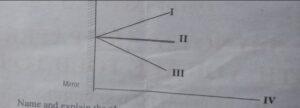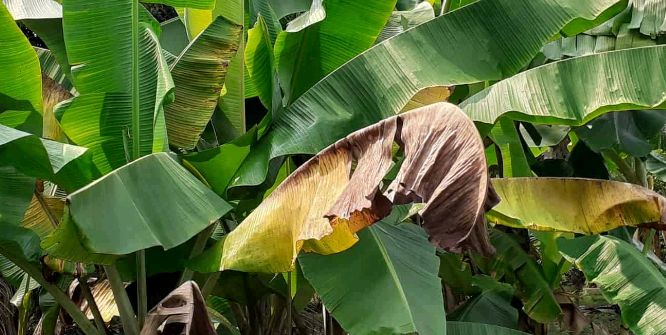Integrated science likely examination questions and answers
Integrated science likely examination questions and answers. Objective test: Attempt all questions
The options in bold are the answers for the objective quick
Integrated science likely examination questions and answers
1. The transfer of heat from the bottom to the top of a beaker containing water is called
A. Conduction
B. Convection
C. Radiation
C. Reabsorption.
2. The instrument used to measure relative humidity is the
A. Hydrometer
B. Hygrometer
C. Rain guage
D. Wind vane
3. When light travels from glass to air, it’s speed is
A. Increased
B. Reduced
C. Halved
D. Unchanged
4. When a piece of iron rode is brought near a bar of permanent magnet for a while it becomes magnetised by.
A. Stroking method
B. Electrical method
C. Friction
D. Induction
4. A rheostat is used in an electric circuit in order to
A. Increase electric current only
B. Decrease electric current only
C. Keep electric current constant
D. Increase and decrease electric current
6. Which of the following statements about opaque object is correct?
A. Allows light to pass through it partially
B. Allows light to pass through it fully
C. Forms a shadow
D. Does not form a shadow
7. One of the characteristics of solid is that
A. It’s particles are tightly packed
B. It assumed the shape of its container
C. It has no fixed volume
D. It’s particles can easily be separated
8. The instrument used to measure current in an electric circuit is.
A. Ammeter
N. Photometer
C. Thermometers
D. Voltmeter
9. The bottom of a pond of water appears closer to the surface than normal because of
A. Reflection
B. Transparency
C. Refraction
D. Rectilinear propagation
10. An example of a source of energy which is non-renewable is.
A. Petroleum
B. Solar.
C. Tide.
D. Wind.
Integrated science likely examination questions and answers
11. Which of the following apparatus is not required in the process of distillation
A. Condenser
B. Evaporating dish.
C. Busen burner
D. Round bottom flask
12. The number of Oxygen atoms present in three molecules of carbon dioxide is.
A. 3.
B. 4.
C. 5.
D. 6
13. The chemical formula formula Cl2 represents two
A. Atoms of chlorine
B. Neurons of chlorine
C. Irons of chlorine
D. Molecules of chlorine
14. Which of the following substances can rust?
A. Aluminum
B. Bauxite
C. Copper
D. Steel
15. Energy stored in food is referred to as
A. Chemical energy
B. Heat energy
C. Solar energy
D. Kinetic energy
16. Which of the following substances is a mixture?
A. Water
B. Sodium chloride
C. Sodium chloride solution
D. Iron filling
17. The mole is the SI unit of
A. Amount of substance
B. Luminous intensity
C. Temperature
D. Mass of a substance
18. An atom has a proton number of 17 and neutron number 18. Determine the number of electrons in the third shell of the atom
A.1.
B. 3
C. 5
D. 7
19. Example of mixtures that can be separated by the method of filtration is
A. Sugar solution
B. Sand and water
C. Oil in water
D. Ink in water
20. Which of the following liquids would turn blue litmus paper red?
A. Vinegar.
B. Water
C. Ammonia solution
D. Bicarbonate solution
21. Which of the following particles constitute matter?
I. Atom.
II. Molecules
III. Irons.
A. I only
B. II only
C. II and III only
D. I, II and III only
22. An example of inheritable characters in humans is
A. Shape of nose.
B. Knowledge.
C. Ability to speak different languages
D. Handwriting
23. Which of the following statements about fertilization is true? It occurs in
A. Ovary
B. Uterus
C. Vagina
D. Fallopian tube.
24. Sperms are produced by the
A. Penis.
B. Sperm duct.
C. Testes.
D. Epididymis
25. One characteristic of wind pollinated flower is that
A. They are large
B. Are heavy scented
C. Have nectar
D. Has feathery stigma
26. Which of the following is an organelle?
A. Cell wall.
B. Cytoplasm
C. Cell membrane
D. Nucleus
27. The instrument used to measure the density of liquids is.
A. Beam balance
B. Spring balance
C. Hygrometer
D. Hydrometer
28. The movement of the ribs is brought by.
A. Pleural cavity
B. Intercoastal muscles
C. Larynx.
D. Trachea
29. Atoms of the same kind is called
A. Molecule.
B. Ion.
C. Iron
.D Element
30. The sinking down of soil nutrients from the top soil into the sub soil is called.
A. Mulching
B. Erosion
C. Leaching
D. Stirring
Integrated science likely examination questions and answers
1. a. The diagram below shows the stages in the water cycle.
Study is carefully and answer the questions that follow.
I. Name the stages labeled I, II, III and IV.
II. Explain each of the stages labeled I, II, III and IV.
b. The diagram below represents the Life cycle of a housefly .Study the diagram carefully and answer the questions that follow
I. Identify the stages labeled I, II, III and IV
Ii. Identify three breed’s of houseflies
III. Name three diseases transmitted by the housefly
c. The diagrams below illustrate living organisms. Study them carefully and answer the questions that follow.
I. Identify each of the organisms labeled I, II and III
II. Which of the organisms is/are
a. Parasite (s)
b. Pest (s)
III. State one effect each of the following organisms on farm animals
a. I.
b. II.
y. III
IV. State one method of controlling the organism labeled I
c. Study the diagram below and answer the questions that follow.
I. Name the parts labeled I, II, III and IV
II. State and Explain the property of light shown above.
III. State the two laws associated with the property of light.
Integrated science likely examination questions and answers
.2. a. I. What is reflection of light?
Ii. State two uses of refraction in every day life activities.
b. I. What is food chain?
Ii. Construct a food chain using four of the following organisms:
Earthworm, grasshopper, man, hen, sheep, cassava plant..
c.identify the stages of the life cycle of flowering plants.
d. Explain the following terms;
I. Leaching
Ii. Transportation
III. Capillary action
IV. Fallow period
3.a. i. Explain what happens when you shake and open a bottle of beer.
Ii. Explain why boiled water is not as pure as distilled water
b.i. Explain two positive ways in which affect agriculture
Ii. State two negative Ways wind affect agriculture
c. An abject is placed 7 m across a surface with a force of 50 N and then back to its original position
I.calculate the work done
Ii. How much power is used if the above work is done in 20s
d. Mention Three uses of blood to the body
4. a. Copy and complete the table below on some chemical compound
a
Integrated science likely examination questions and answers
b. List three farming practices that helps Prevents pests in crop production
c. Give Four benefits of photosynthesis in every day life
d. I. What is surface tension?.
Ii. Explain how the principle of surface tension operates in raincoats
4. a. Give two cultural practices of controlling endoparasites in humans
b. I. State two negative effects of friction in every day life
Ii. Mention two ways of reducing friction
c. I. What is chlorination?
Ii. Explain the role of alum in water treatment
d. I. Stay two effects of the disruption of the carbon cycle
Ii. Outline two ways of maintening the carbon cycle
5. a. I. Identify four farming practices that encourage soil erosion
Ii. Give Four farming practices that help control soil erosion
b. I. State two factors which affect the pressure in fluids
Ii. Give two useful applications of pressure in fluids
c. Name the elements that are contained in each of the following substances
I. Common salt
Ii. Water
III. Sugar
IV. Carbon dioxide
d. State three causes of high blood pressure in humans
Integrated science likely examination questions and answers
6. I. List four benefits of trusting on metals
Ii. Give Four way of preventing rusting
b. State four harmful effects of worms on farm animals
c. Explain why a tin of milk requires proper shaking before use while a toothpaste does not
d . Explain why a fish can move faster in water than man.
Answers will follow soon











